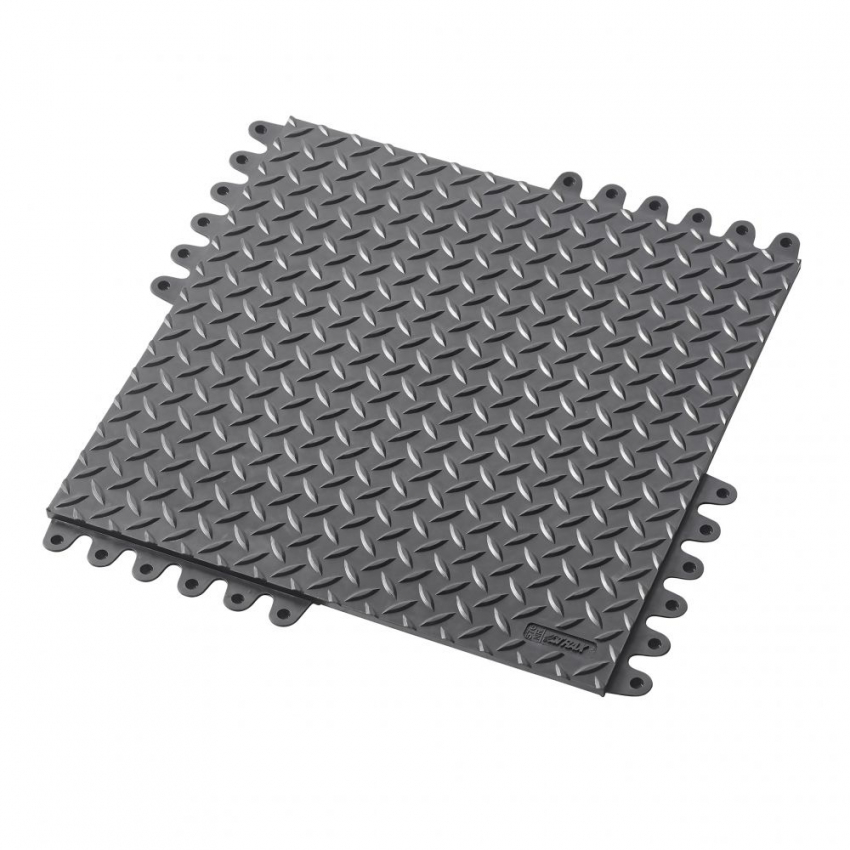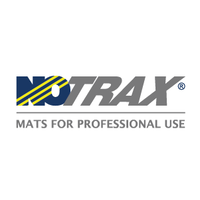






This anti-fatigue mat is based on a modular 45 cm x 45 cm tile system to provide you with a tailor-made anti-fatigue mat to cover large areas or to equip your workstations.
Its double universal connection system on all 4 sides guarantees a robust, easy-to-install connection.
The 19 mm thickness ensures operator comfort by isolating the mat from the hard floor, and the bubble domes underneath ensure that the mat retains its suppleness and flexibility.
Heavy-duty - Dry industrial environments
Manufacturing plants, production lines, assembly lines, metalworking, individual workstations and custom platforms.
571 De-Flex Safety Ramp Nitrile

| 570 De-Flex |
Data sheet
| Format | Slabs |
| Surface | Diamond plate |
| Properties | Anti-fatigue |
| Composition | 100% natural rubber |
| Thickness | 19 mm |
| Weight | 3.3 kg per mat |
| Borders | connectable bevels available |
| Resistant to chemicals | Yes |
| Maintenance / Cleaning | Vacuuming |
| Environment | Dry environments |
| Intensity of use | Very intense |
| Wear index | 3/3 (Excellent) |
| Anti-slip classification | R10 |
Industrial mats meet the needs of ergonomic workstations and employee well-being.
They prevent:
There are many uses for industrial mats:
Safety criteria: The mat must cover the entire workstation, be firmly attached to the floor, not shift or slide, and have bevelled edges to prevent falls.
Thickness and flexibility criteria: Contrary to what you might think, you shouldn't choose a very thick or very soft mat. The mat should have a certain elasticity, but still allow a comfortable standing position, without the user feeling slumped.
Environmental criteria :
Environmental hazard criteria : To establish more precise characteristics for a mat (antistatic properties or fire resistance etc...) we need to take into account the hazards present in the environment where the mat will be installed.
Where hazardous liquids are present in the working environment, the anti-slip properties and chemical resistance of industrial mats should be taken into account. The presence of openings on mats to allow the evacuation of fluids is essential.
Traffic criteria: We need to take into account the traffic that takes place on the equipment: how many workers can walk on it? How often, etc., in order to choose the most suitable mat.
Prevent the many problems associated with poor workstation ergonomics: RSI, static shock, bacterial proliferation, etc.
We offer a wide choice of industrial mats: on rolls, in standard sizes, made-to-measure or modular mats to suit all types of workstations.